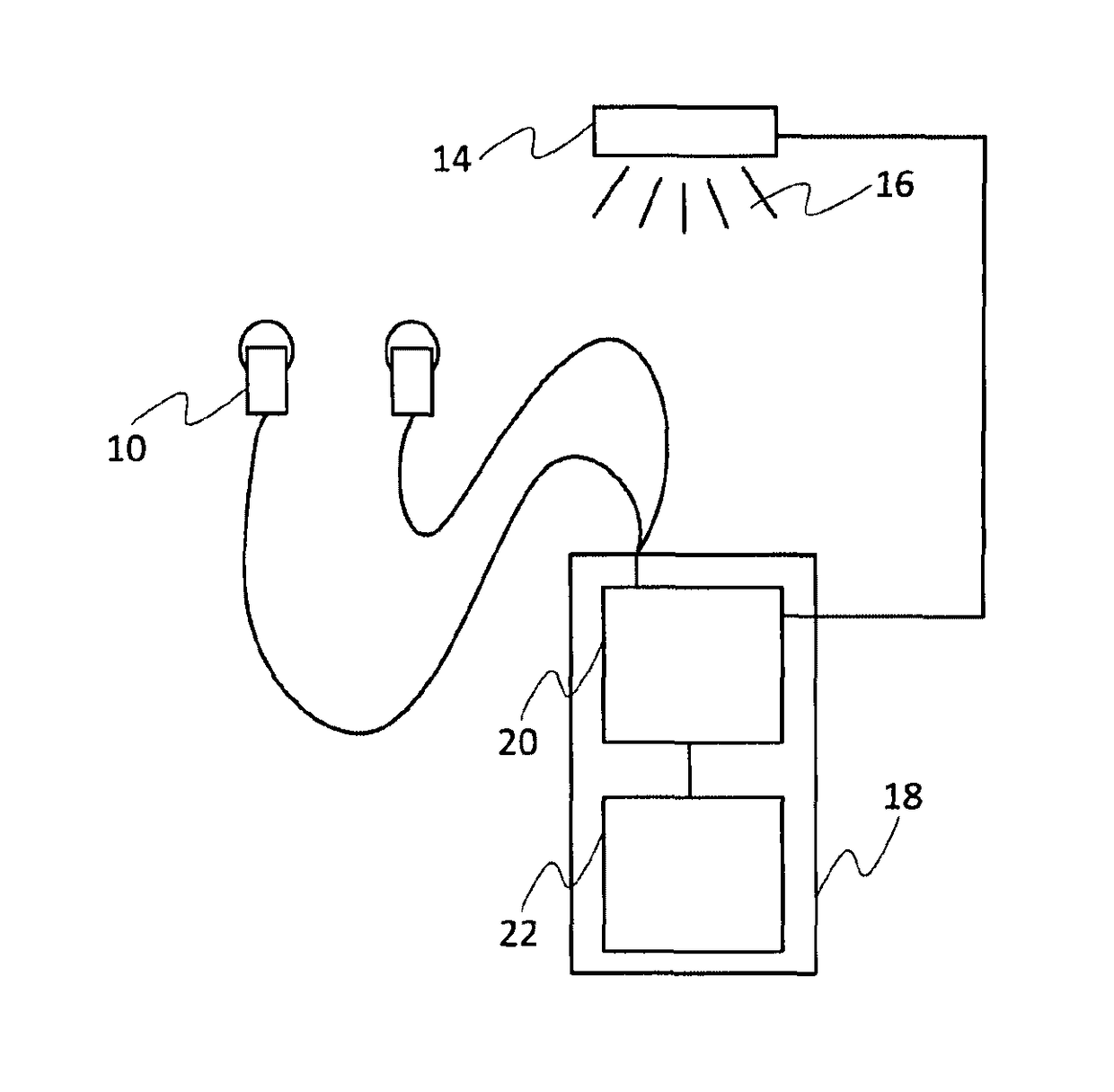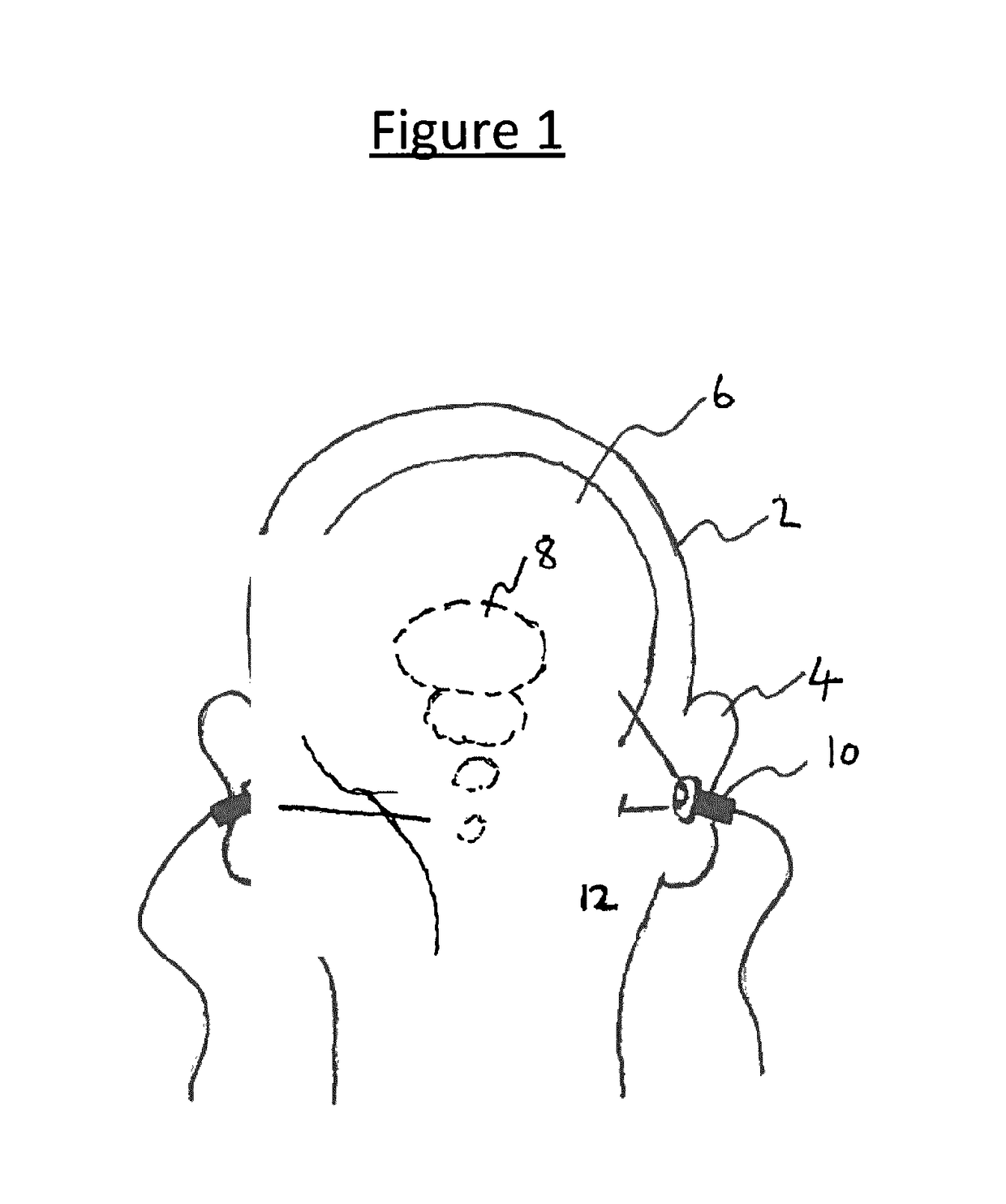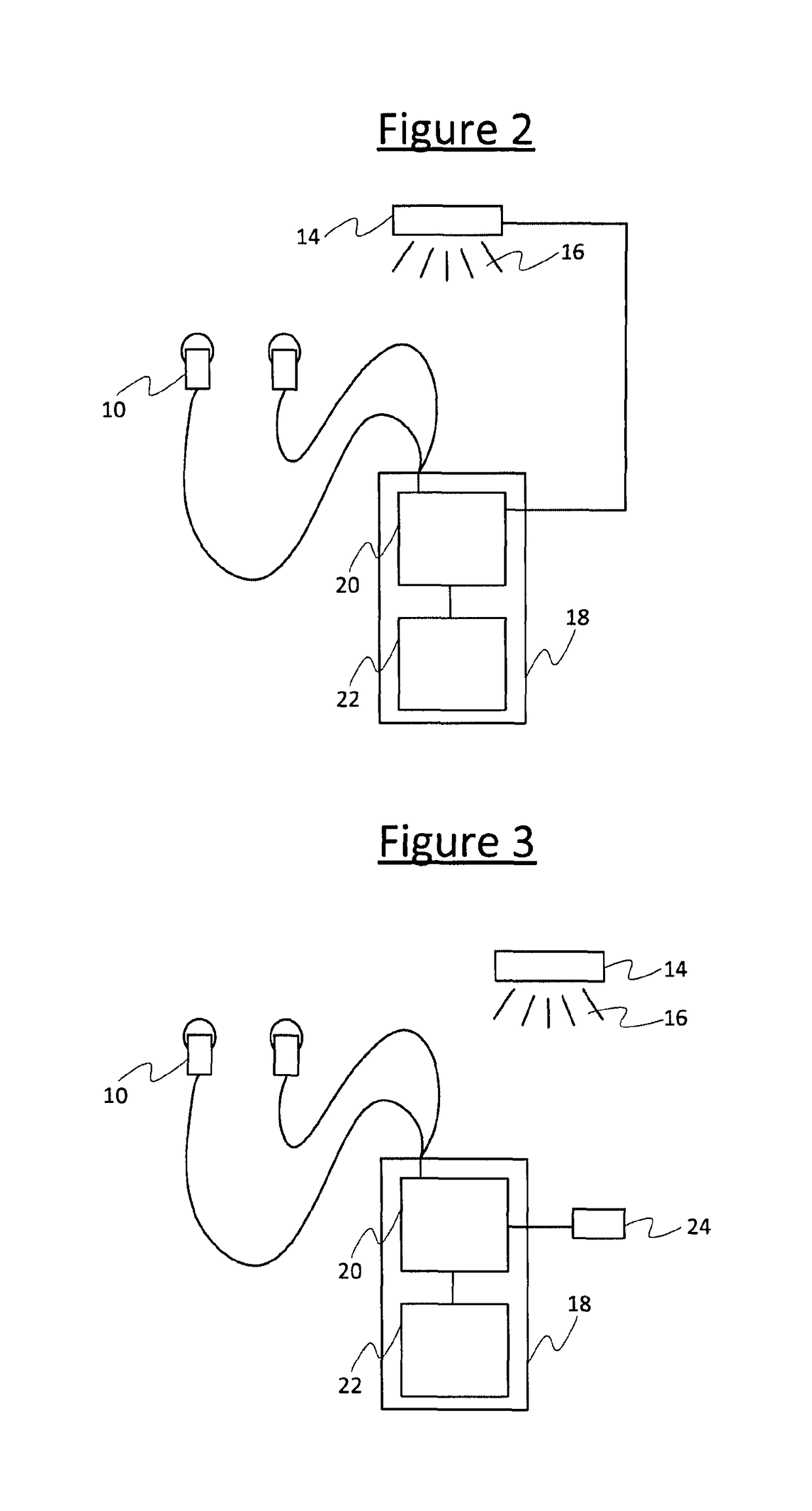Non-ocular photo-biological stimulation
a non-ocular, photobiological technology, applied in the direction of radiation therapy, light therapy, therapy, etc., can solve the problems of non-ocular photobiological light treatment, separate, uncoordinated illumination sources, and users not having the ability to individually tailor the non-ocular light stimulation
- Summary
- Abstract
- Description
- Claims
- Application Information
AI Technical Summary
Benefits of technology
Problems solved by technology
Method used
Image
Examples
first embodiment
[0033]A first embodiment is described in relation to FIG. 2. This illustrates a controlled light system for providing light to the eyes and to the ears comprising: a first light source 10 for emitting light 12 to at least one ear of a user 2; a second light source 14 for emitting light 16 to be received by at least one eye of the user 2; and a controller 18 for controlling the first and second light sources 10, 14 to generate light based on a required biological and emotional effect for the user 2. An alternative may be based on a required biological effect created by light provided through the ear and a functional effect created by light through the eye, an example of the latter being the vision function of office lighting. The controller 18 may be implemented in the form of a processor 20 comprising one or more processing units, and a memory 22 comprising one or more storage media such as magnetic or electronic storage, the processor 20 being arranged to execute code stored on the...
second embodiment
[0047]A second embodiment is described in relation to FIG. 3. Here the system is similar to that of FIG. 2 except that the controller 18 is arranged to control the first light source 10 but not necessarily the second light source 14. Instead, the controller 18 is coupled to a sensor 24 arranged to sense at least one property of the light 16 from the second light source 14, e.g. its intensity and / or information on its color or spectrum. In this case the second light source 14 could be any independent light source in the environment, e.g. one or more luminaires providing ambient illumination and being controlled from a separate controller or switch.
[0048]Like the first embodiment, the controller 18 controlling the first light source 10 is configured to control the light source to generate light 12 for non-ocular light stimulation based on a required biological effect for the user. However in the second embodiment it is configured to do this by using the sensor 24 to detect the light 1...
third embodiment
[0060]The third embodiment provides a solution by configuring the controller 18 to provide treatment to children and teenagers automatically under correct conditions only. The light-stimulation is automatically determined for a particular user and activated only at the correct time for the user (non-disruptive to circadian rhythms). This may additionally be based on a user light profile and requirement.
[0061]In embodiments, an in-ear light headset 10 may be integrated into earphones, e.g. with mp3 player attachment to create an mp3 player accessory to generate and control the light.
[0062]The system may provide regulated light stimulation, in accordance with circadian rhythms. The user logs in with biometrics or other login information such as touchscreen fingerprint. Based on this, the controller 18 is configured to determine an identity of the user, including age. It also incorporates a clock 26 to tell time of day. The controller 18 may for example determine the circadian cycle of...
PUM
 Login to View More
Login to View More Abstract
Description
Claims
Application Information
 Login to View More
Login to View More - R&D
- Intellectual Property
- Life Sciences
- Materials
- Tech Scout
- Unparalleled Data Quality
- Higher Quality Content
- 60% Fewer Hallucinations
Browse by: Latest US Patents, China's latest patents, Technical Efficacy Thesaurus, Application Domain, Technology Topic, Popular Technical Reports.
© 2025 PatSnap. All rights reserved.Legal|Privacy policy|Modern Slavery Act Transparency Statement|Sitemap|About US| Contact US: help@patsnap.com



